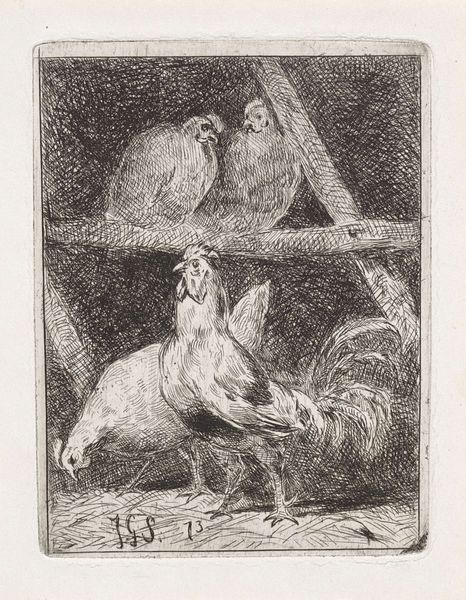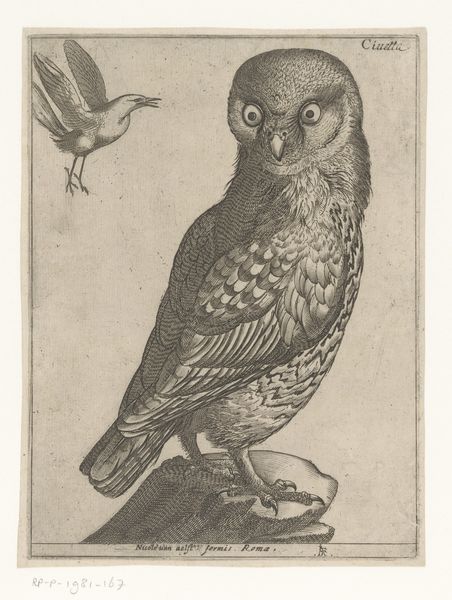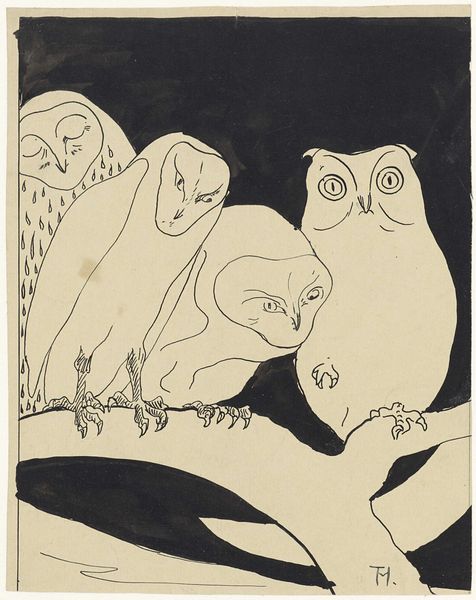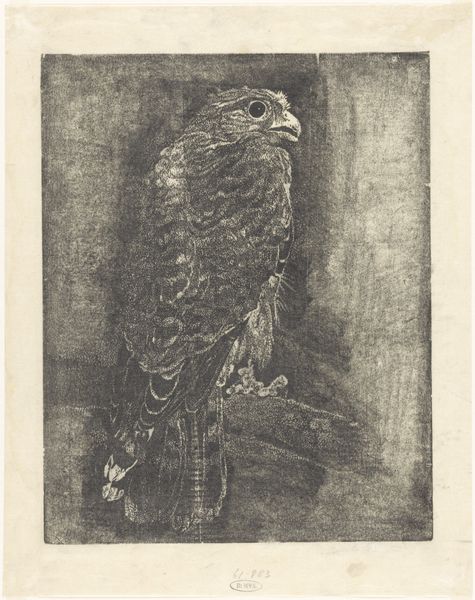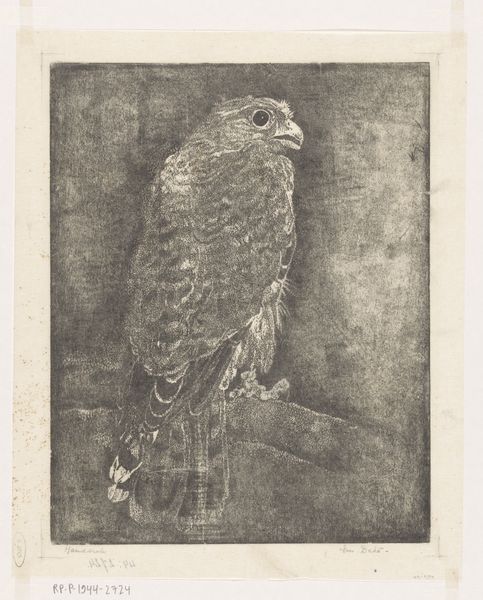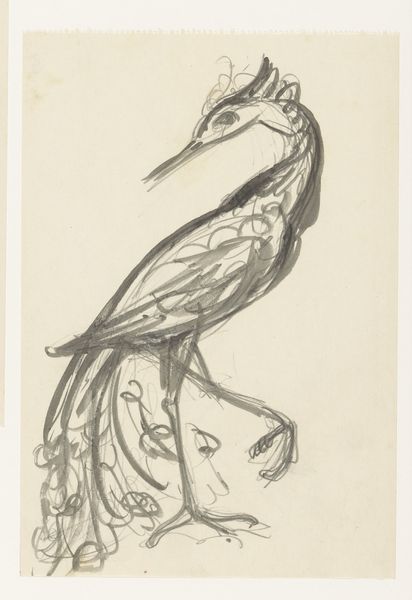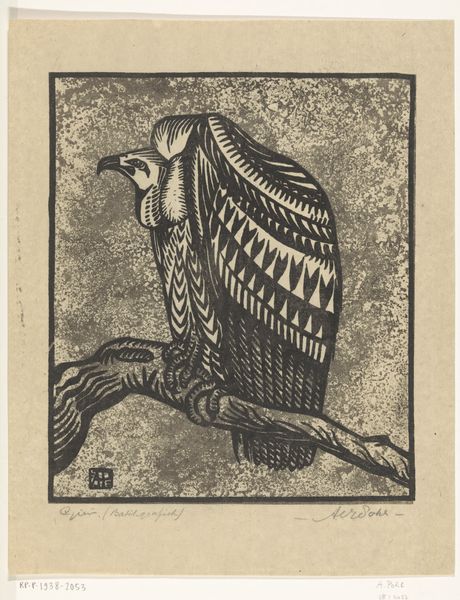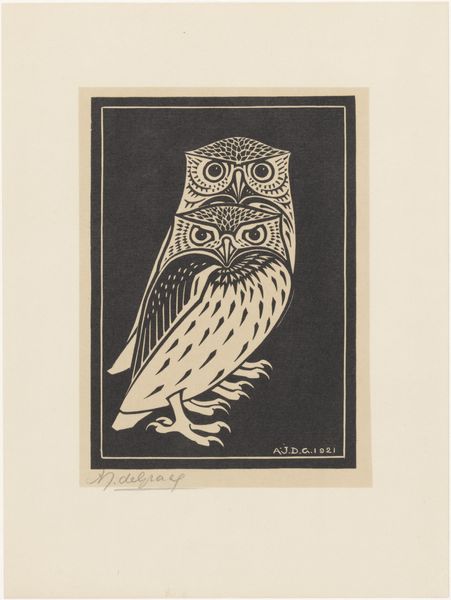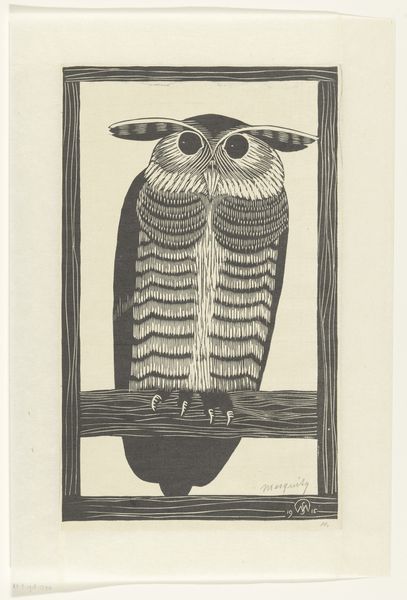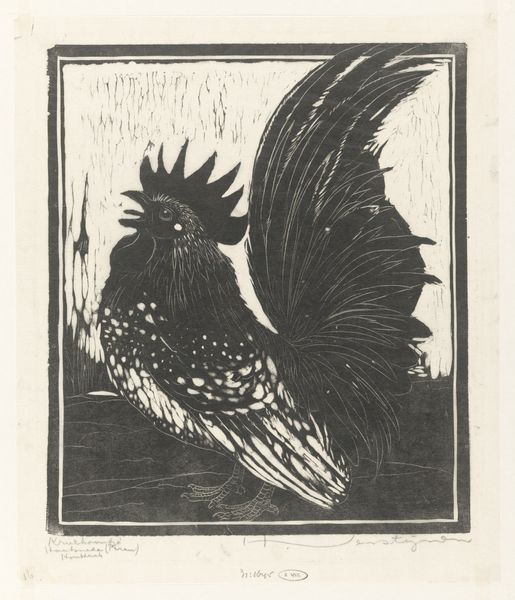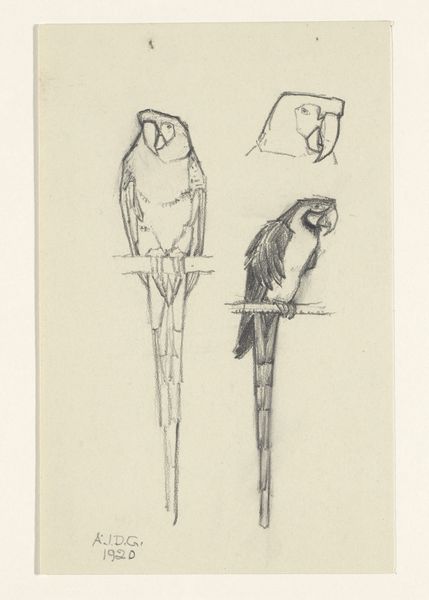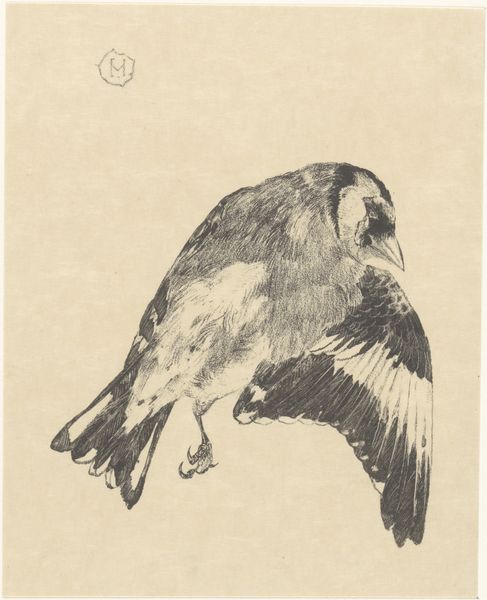
drawing, print, paper, graphite
#
portrait
#
drawing
# print
#
pencil sketch
#
figuration
#
paper
#
graphite
#
naturalism
Dimensions: height 474 mm, width 317 mm, height 592 mm, width 418 mm
Copyright: Rijks Museum: Open Domain
Editor: Here we have Theo van Hoytema's "Four Little Owls and Two Kestrels" from 1898. It's a print made with graphite and pencil on paper. I'm really drawn to the realism and detail he captured, especially in their plumage, though it gives me the creeps to see them all lined up. What stands out to you? Curator: I immediately notice the artist's dedicated labor. Consider the paper itself – a commodity produced through specific industrial processes, then the graphite and pencil, humble yet vital tools. How does van Hoytema elevate these materials through skillful manipulation and his chosen subject, birds? Is this work making a subtle statement about humanity’s relationship to nature and manufactured goods? Editor: So, you're looking at the bigger picture— the paper and pencil, and how they connect to our modern world? I suppose it's interesting to think about where art supplies come from. Do you see the owls and kestrels as symbolic, or is he just capturing nature? Curator: Symbols are constructs, you know? I prefer to look at what van Hoytema is showing us about our consumption and manipulation of the natural world. He renders these creatures with meticulous detail. Yet, how is that different from classifying or ordering nature for human use? Consider also that his work ended up mass produced as prints, sold for popular consumption and perhaps pasted in homes as decorations. Editor: I never considered that someone made and sold prints of art works in those days to be “consumed”. Are you suggesting his naturalism, is somehow artificial due to this commercial aspect? Curator: Precisely. And what labor went into this distribution? And what does the consumer of such prints have to do with the environmental issues, let’s say, or conservation efforts surrounding owls and kestrels at the turn of the century? These material things are never divorced from socioeconomic context. Editor: Wow, this piece offers more to think about than meets the eye. It's amazing how you connected his technique and the materials to industrialization and nature. Thanks, that helps a lot! Curator: Indeed. Thinking through process illuminates the cultural environment around us, hopefully moving us past just admiring artistry to engaging more critically.
Comments
No comments
Be the first to comment and join the conversation on the ultimate creative platform.

